en ja es pt
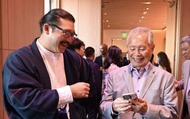
identity

Our theme for the 12th edition of Nikkei Chronicles—Growing Up Nikkei: Connecting with Our Heritage—asked participants to reflect upon several questions, such as: What kind of Nikkei community events did you attend? What kinds of childhood stories do you have about Nikkei food? How did you learn Japanese as a child?
Discover Nikkei accepted submissions from June to October 2023 and voting for favorite stories closed on November 30, 2023. We received 14 stories (7 English; 3 Spanish; 5 Portuguese; 0 Japanese) from Brazil, Peru, and the United States, with one submitted in multiple languages.
Thank you very much to everyone who submitted their Growing Up Nikkei stories!
We asked our editorial committee to select their favorite stories. Our Nima-kai community also voted for the stories they enjoyed. Here are their selections!
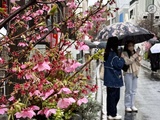
Embracing Imperfection: A Journey of Self-Exploration in Japan
By Lauren Rise Masuda
English | Spanish | Portuguese
English:
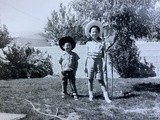
An Albuquerque Childhood
By Edna Horiuchi
Comment from Alden M. Hayashi
The Growing Up Nikkei essays were all so beautifully written, filled with touching, heartfelt memories, some beautiful and sweet, others poignant and painful. Of the English-language essays, my personal favorite was “An Albuquerque Childhood” by Edna Horiuchi. This essay really resonated with me because my parents, like Edna’s parents, had both grown up in Hawaii, except my parents remained there to start a family whereas Edna’s parents relocated to the mainland. So I couldn’t help but read her thoughtful, evocative essay without wondering how different my life would have been if, for whatever reason, my parents had also moved to the mainland.
Edna provides ample details of that other life away from Hawaii: being the only Nikkei student in her elementary school (until her younger brother’s arrival); getting annoying questions from classmates (did she sleep on the floor and eat from a low table?); having to drive across town to a small Japanese store to stock up on shoyu, miso, and other food items; and celebrating oshogatsu with “adopted relatives.” I was particularly touched by her memory of visiting the Ala Moana Center on her family’s trip to Honolulu. There she marveled at the multitude of other Asians going about their shopping at the busy outdoor mall. I could have been one of the many Asians there, and Edna’s lucid, vivid writing made me feel what it would have been like to see myself that day but from a very different pair of eyes.
Spanish:

Jinsei no aki (Autumn of Life)
By Roberto Oshiro Teruya
Comment from Harumi Nako Fuentes
What does it mean to grow up Nikkei and connect with one’s heritage? There isn’t a single answer to that question. For the descendants of Japanese immigrants throughout the world, the connection to their roots is as rich and diverse as the responses received to this call for stories. These accounts speak to us about childhood experiences, learning through art, as well as searching for and rediscovering one’s own identity.
This story, “Jinsei no aki (Autumn of Life),” includes family episodes that bring together traditions and rites, as well as sadness and hope, in an intimate portrayal where many readers may see their own experiences reflected.
Reading the story produces a “natsukashii” effect, as the author says. As a way of ensuring his own experiences aren’t forgotten, he recalls and shares them with readers, capturing us with a nostalgic and moving gaze. The experience of turning 60 years old is transformed from the autumn of life into a springtime where memories and evocations blossom, nurtured by the story’s unique elements and memories of the Nikkei community.
Portuguese:
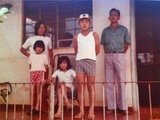
Arigatai!!!
By Edna Hiromi Ogihara Cardoso
Comment from Laura Honda-Hasegawa
Growing Up Nikkei had the participation of five Brazilian Nikkei women who explained how Japanese culture influenced their lives, while also opening their hearts so as to lay bare their feelings, perceptions, and doubts about their Nikkei identity. Since we received several amazing stories, our attention was gripped by those filled with the most interesting situations, which in turn made our task of selecting just one incredibly difficult. Ultimately, we chose the story that fully addresses the proposed theme: “Arigatai!!!”
Its author, Edna Hiromi Ogihara Cardoso, duly shows how her life has been connected to Japan since childhood: the arts, cuisine, language, manga, imported magazines, Nikkei community events. Today, Edna shares with her young daughter the rich heritage that has been passed on to them and, along with their family, they all give thanks for everything! Arigatai!!!
We have closed submissions for this series, but you can still share your story on Discover Nikkei. Please check our Journal submission guidelines to share your story!
We're deeply grateful for the participation of our Editorial Committee:
ENGLISH 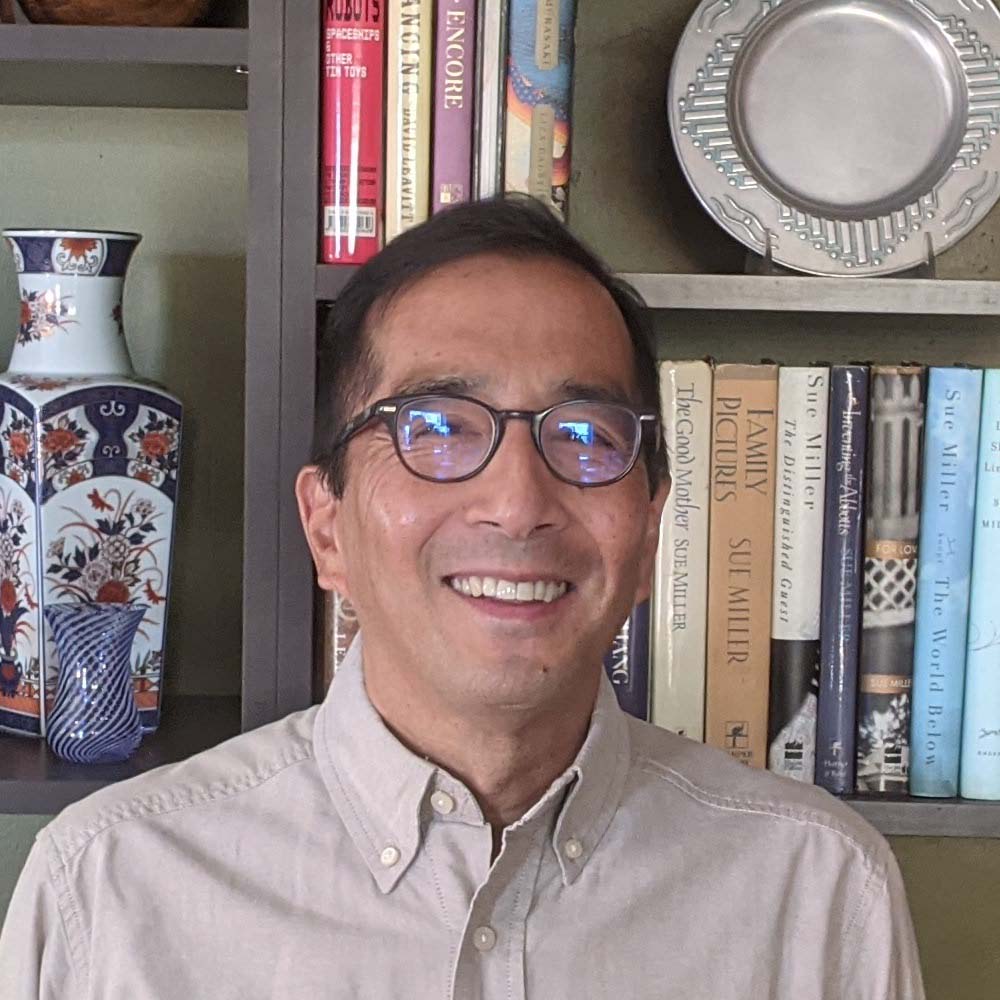 Alden M. Hayashi is a Sansei who was born and raised in Honolulu but now lives in Boston. After writing about science, technology, and business for more than thirty years, he has recently begun writing fiction to preserve stories of the Nikkei experience. His first novel, Two Nails, One Love, was published by Black Rose Writing in 2021. His website: www.aldenmhayashi.com.
Alden M. Hayashi is a Sansei who was born and raised in Honolulu but now lives in Boston. After writing about science, technology, and business for more than thirty years, he has recently begun writing fiction to preserve stories of the Nikkei experience. His first novel, Two Nails, One Love, was published by Black Rose Writing in 2021. His website: www.aldenmhayashi.com.
JAPANESE
 Emily Anderson is Project Curator at the Japanese American National Museum and a specialist on modern Japan. Having received her PhD in modern Japanese history from UCLA in 2010, she was assistant professor of Japanese history at Washington State University (Pullman, Washington) from 2010-2014, and postdoctoral fellow at University of Auckland in 2014. She is the author of Christianity in Modern Japan: Empire for God (Bloomsbury, 2014) and the editor of Belief and Practice in Imperial Japan and Colonial Korea (Palgrave MacMillan, 2017) as well as a number of articles and book chapters on religion and imperialism in Japan and the Pacific. She also has extensive experience developing museum exhibitions, including co-curating Boyle Heights: Power of Place (JANM, 2002-2003), Cannibals: Myth and Reality (San Diego Museum of Man, 2015-ongoing), and Sutra and Bible: Faith and Japanese American World War II Incarceration (JANM, 2022-2023).
Emily Anderson is Project Curator at the Japanese American National Museum and a specialist on modern Japan. Having received her PhD in modern Japanese history from UCLA in 2010, she was assistant professor of Japanese history at Washington State University (Pullman, Washington) from 2010-2014, and postdoctoral fellow at University of Auckland in 2014. She is the author of Christianity in Modern Japan: Empire for God (Bloomsbury, 2014) and the editor of Belief and Practice in Imperial Japan and Colonial Korea (Palgrave MacMillan, 2017) as well as a number of articles and book chapters on religion and imperialism in Japan and the Pacific. She also has extensive experience developing museum exhibitions, including co-curating Boyle Heights: Power of Place (JANM, 2002-2003), Cannibals: Myth and Reality (San Diego Museum of Man, 2015-ongoing), and Sutra and Bible: Faith and Japanese American World War II Incarceration (JANM, 2022-2023).
SPANISH
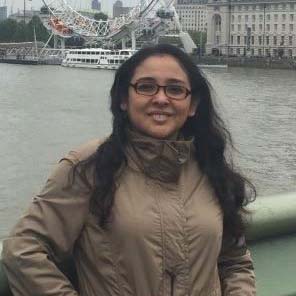 Harumi Nako Fuentes has a B.A. in Communication Studies with an emphasis in journalism from the University of Lima. She has worked at both public and private institutions—as a teacher, media analyst, editor, and publisher of several publications. She has also taken specialization courses in brand image and marketing, and has a degree in Cultural Management. Currently, she is the Communications Manager at the Japanese Peruvian Association (APJ), editor of Kaikan magazine, and a member of the editorial board of the APJ Editorial Fund.
Harumi Nako Fuentes has a B.A. in Communication Studies with an emphasis in journalism from the University of Lima. She has worked at both public and private institutions—as a teacher, media analyst, editor, and publisher of several publications. She has also taken specialization courses in brand image and marketing, and has a degree in Cultural Management. Currently, she is the Communications Manager at the Japanese Peruvian Association (APJ), editor of Kaikan magazine, and a member of the editorial board of the APJ Editorial Fund.
PORTUGUESE
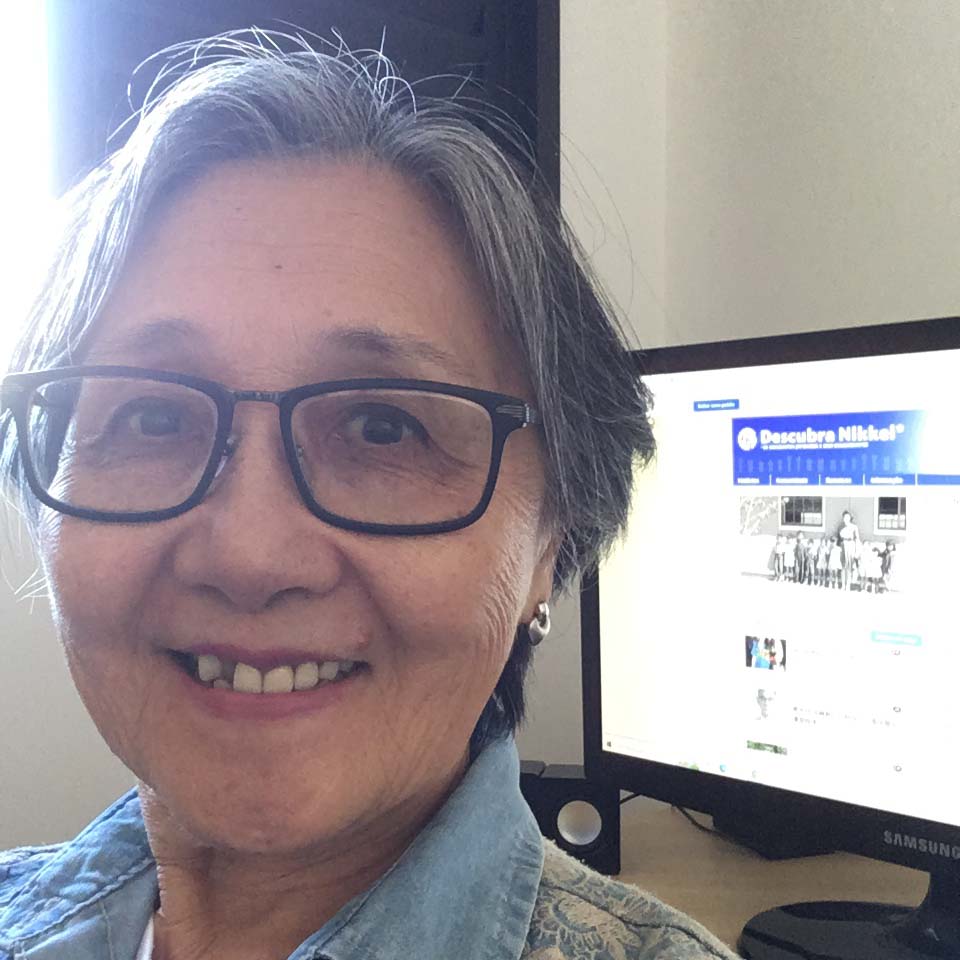 Laura Honda-Hasegawa, born in São Paulo, Brazil in 1947, worked in the field of education until 2009. Since then, she has dedicated herself exclusively to writing essays, short stories, and novels from a Nikkei point of view. She grew up listening to Japanese children’s stories told by her mother. As a teenager, she read the monthly issue of Shojo Kurabu, a youth magazine for girls imported from Japan. She watched almost all of Ozu’s films, developing a great admiration for Japanese culture all her life.
Laura Honda-Hasegawa, born in São Paulo, Brazil in 1947, worked in the field of education until 2009. Since then, she has dedicated herself exclusively to writing essays, short stories, and novels from a Nikkei point of view. She grew up listening to Japanese children’s stories told by her mother. As a teenager, she read the monthly issue of Shojo Kurabu, a youth magazine for girls imported from Japan. She watched almost all of Ozu’s films, developing a great admiration for Japanese culture all her life.
 The Asociación Peruano Japonesa (APJ—Peruvian Japanese Association) is a non-profit organization that represents the Peruvian Nikkei community and its institutions. Founded on November 3, 1917, APJ preserves the memory of Japanese immigrants and their descendants, develops cultural promotion and welfare assistance activities, and provides education and health services. APJ also promotes cultural, scientific and technological exchange between Peru and Japan, strengthening friendly relations between both countries.
The Asociación Peruano Japonesa (APJ—Peruvian Japanese Association) is a non-profit organization that represents the Peruvian Nikkei community and its institutions. Founded on November 3, 1917, APJ preserves the memory of Japanese immigrants and their descendants, develops cultural promotion and welfare assistance activities, and provides education and health services. APJ also promotes cultural, scientific and technological exchange between Peru and Japan, strengthening friendly relations between both countries.
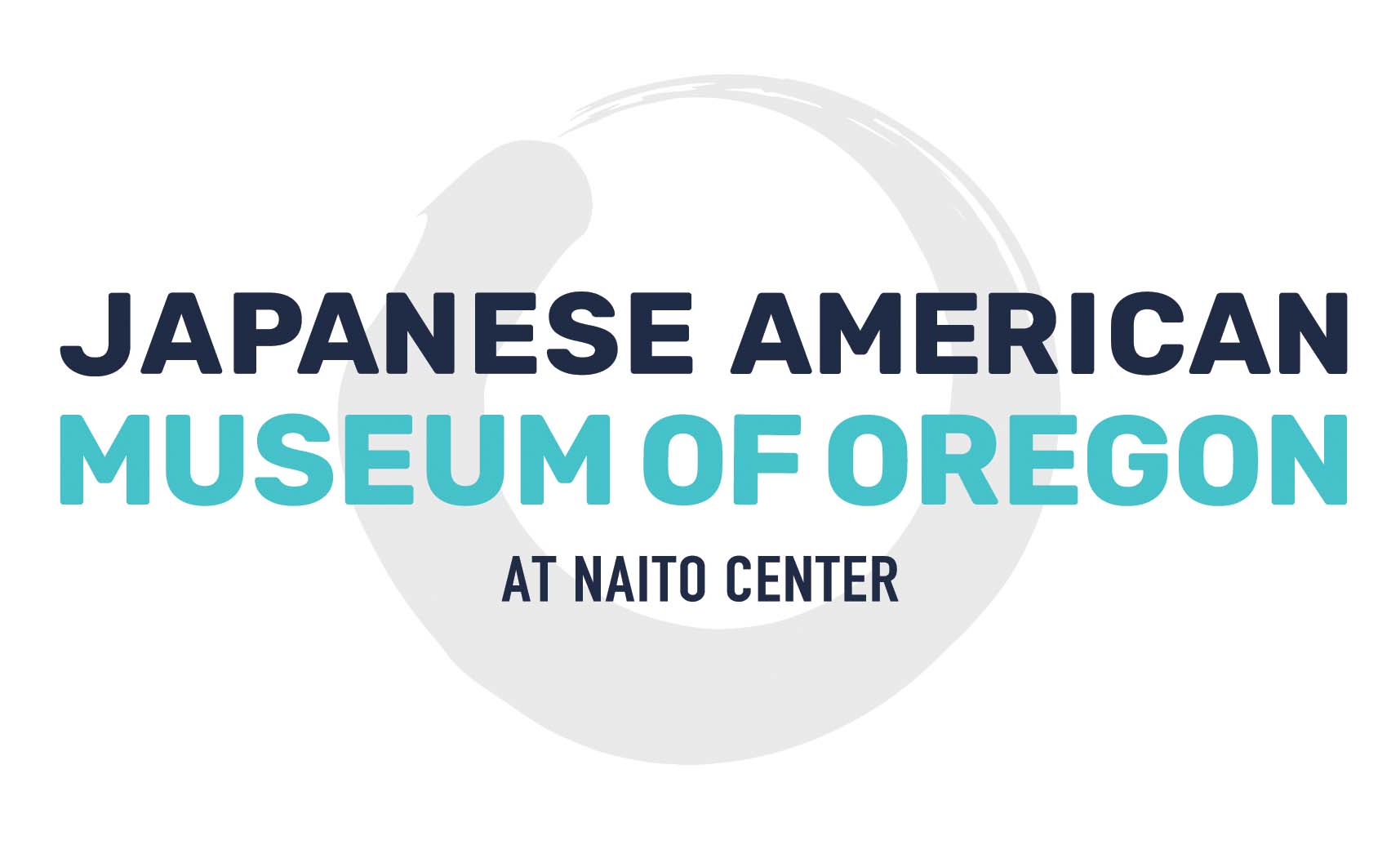 The mission of the Japanese American Museum of Oregon is to preserve and honor the history and culture of Japanese Americans in the Pacific Northwest, educate the public about the Japanese American experience during WWII, and advocate for the protection of civil rights for all Americans. Formerly known as the Oregon Nikkei Legacy Center, our museum is a venue for culture and research as well as an invaluable resource for exploring Nikkei experiences and their role in Oregon’s multicultural community. Our permanent exhibit space highlights Issei immigration and early life in Oregon, Nihonmachi (Japantown), and the experience during World War II through Nikkei life today.
The mission of the Japanese American Museum of Oregon is to preserve and honor the history and culture of Japanese Americans in the Pacific Northwest, educate the public about the Japanese American experience during WWII, and advocate for the protection of civil rights for all Americans. Formerly known as the Oregon Nikkei Legacy Center, our museum is a venue for culture and research as well as an invaluable resource for exploring Nikkei experiences and their role in Oregon’s multicultural community. Our permanent exhibit space highlights Issei immigration and early life in Oregon, Nihonmachi (Japantown), and the experience during World War II through Nikkei life today.
 Founded in 1963, the Japanese Canadian Cultural Centre (JCCC) is a not-for-profit organization which celebrates the unique culture, history, and legacy of Japanese Canadians for the benefit of all Canadians, while creating a tribute to the history of the Nikkei community and their contributions to the building of our nation. A multi-cultural centre, the JCCC is recognized worldwide as an important and vibrant community institution. It serves 5,200 members, almost half of which are of non-Japanese ancestry, attracts over 210,000 visitors a year to its festivals, concerts, marital arts tournaments and special events and is home to the Discover Japan Educational Program which hosts 15,000 school children annually. The JCCC has welcomed many guests and dignitaries including Their Majesties, the Emperor and Empress of Japan and Her Imperial Highness Princess Takamado.
Founded in 1963, the Japanese Canadian Cultural Centre (JCCC) is a not-for-profit organization which celebrates the unique culture, history, and legacy of Japanese Canadians for the benefit of all Canadians, while creating a tribute to the history of the Nikkei community and their contributions to the building of our nation. A multi-cultural centre, the JCCC is recognized worldwide as an important and vibrant community institution. It serves 5,200 members, almost half of which are of non-Japanese ancestry, attracts over 210,000 visitors a year to its festivals, concerts, marital arts tournaments and special events and is home to the Discover Japan Educational Program which hosts 15,000 school children annually. The JCCC has welcomed many guests and dignitaries including Their Majesties, the Emperor and Empress of Japan and Her Imperial Highness Princess Takamado.
Thanks to Jay Horinouchi for designing our Growing Up Nikkei logo, and our wonderful volunteers and partners who help us review, edit, upload, and promote this project!
Disclaimer: By submitting your story, you are granting Discover Nikkei and the Japanese American National Museum permission to post your article and images on DiscoverNikkei.org, and potentially other publications in print or online affiliated with this project. This includes any translations of your work in association with Discover Nikkei. You, the writer, will retain copyright. Check Discover Nikkei’s Terms of Services and Privacy Policy for more details.